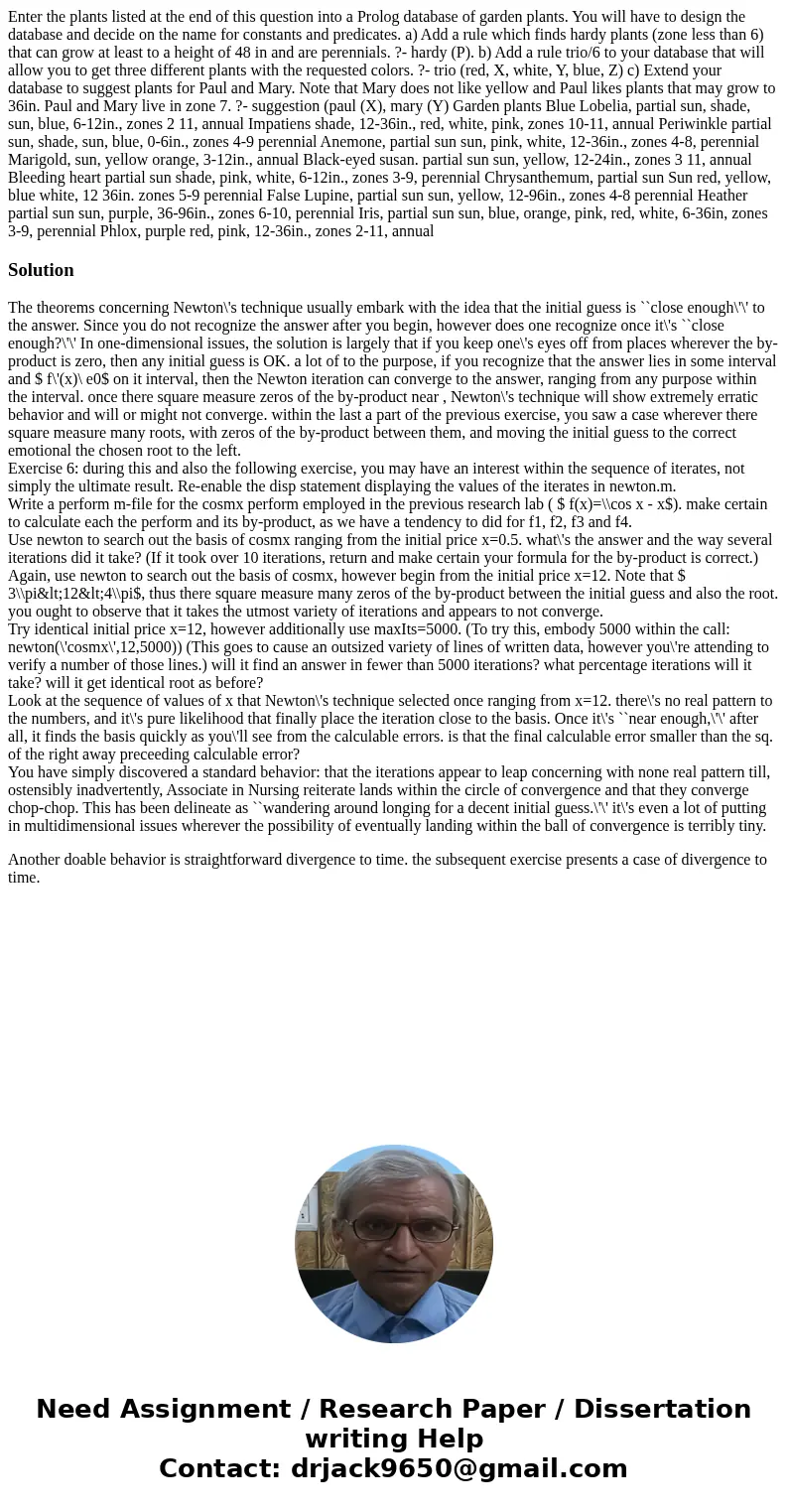Enter the plants listed at the end of this question into a P
Solution
The theorems concerning Newton\'s technique usually embark with the idea that the initial guess is ``close enough\'\' to the answer. Since you do not recognize the answer after you begin, however does one recognize once it\'s ``close enough?\'\' In one-dimensional issues, the solution is largely that if you keep one\'s eyes off from places wherever the by-product is zero, then any initial guess is OK. a lot of to the purpose, if you recognize that the answer lies in some interval and $ f\'(x)\ e0$ on it interval, then the Newton iteration can converge to the answer, ranging from any purpose within the interval. once there square measure zeros of the by-product near , Newton\'s technique will show extremely erratic behavior and will or might not converge. within the last a part of the previous exercise, you saw a case wherever there square measure many roots, with zeros of the by-product between them, and moving the initial guess to the correct emotional the chosen root to the left.
Exercise 6: during this and also the following exercise, you may have an interest within the sequence of iterates, not simply the ultimate result. Re-enable the disp statement displaying the values of the iterates in newton.m.
Write a perform m-file for the cosmx perform employed in the previous research lab ( $ f(x)=\\cos x - x$). make certain to calculate each the perform and its by-product, as we have a tendency to did for f1, f2, f3 and f4.
Use newton to search out the basis of cosmx ranging from the initial price x=0.5. what\'s the answer and the way several iterations did it take? (If it took over 10 iterations, return and make certain your formula for the by-product is correct.)
Again, use newton to search out the basis of cosmx, however begin from the initial price x=12. Note that $ 3\\pi<12<4\\pi$, thus there square measure many zeros of the by-product between the initial guess and also the root. you ought to observe that it takes the utmost variety of iterations and appears to not converge.
Try identical initial price x=12, however additionally use maxIts=5000. (To try this, embody 5000 within the call: newton(\'cosmx\',12,5000)) (This goes to cause an outsized variety of lines of written data, however you\'re attending to verify a number of those lines.) will it find an answer in fewer than 5000 iterations? what percentage iterations will it take? will it get identical root as before?
Look at the sequence of values of x that Newton\'s technique selected once ranging from x=12. there\'s no real pattern to the numbers, and it\'s pure likelihood that finally place the iteration close to the basis. Once it\'s ``near enough,\'\' after all, it finds the basis quickly as you\'ll see from the calculable errors. is that the final calculable error smaller than the sq. of the right away preceeding calculable error?
You have simply discovered a standard behavior: that the iterations appear to leap concerning with none real pattern till, ostensibly inadvertently, Associate in Nursing reiterate lands within the circle of convergence and that they converge chop-chop. This has been delineate as ``wandering around longing for a decent initial guess.\'\' it\'s even a lot of putting in multidimensional issues wherever the possibility of eventually landing within the ball of convergence is terribly tiny.
Another doable behavior is straightforward divergence to time. the subsequent exercise presents a case of divergence to time.

 Homework Sourse
Homework Sourse